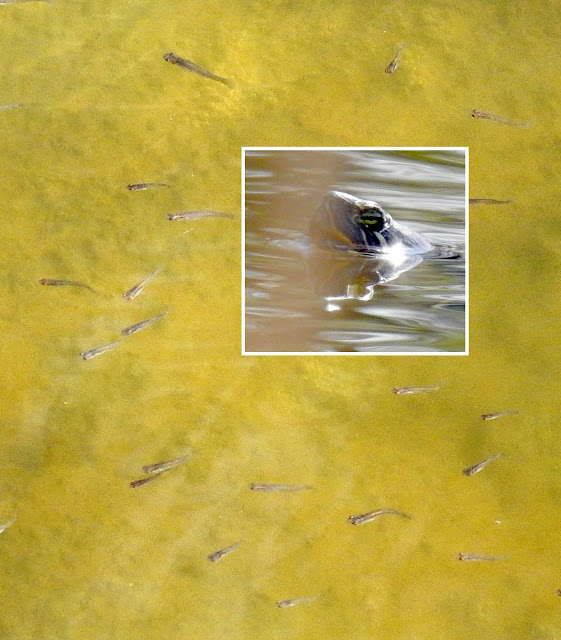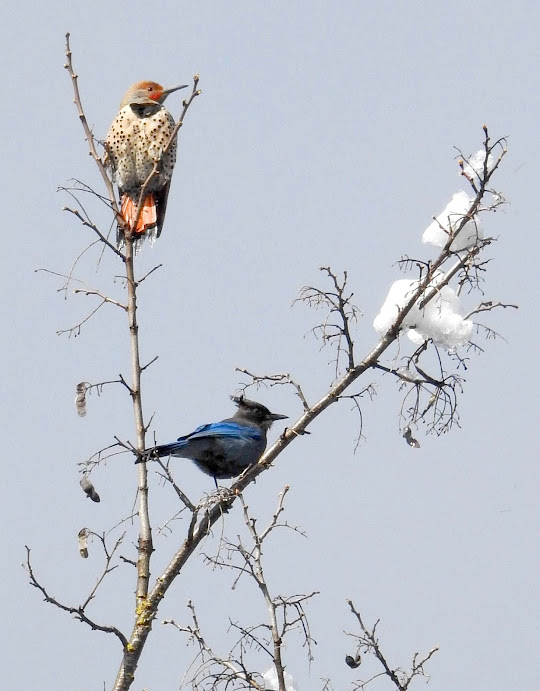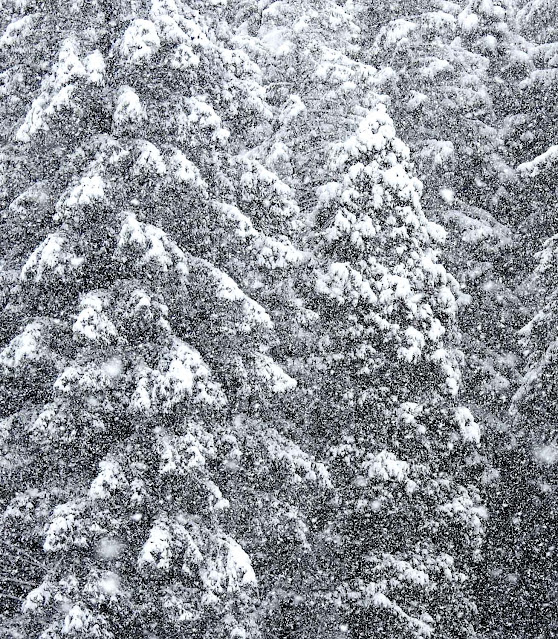This week we went down to another oak woodland in the foothills, which is part of the Spenceville wildlife preserve and recreation area run by the California State Department of Fish and Game. I had never been to this area before. Unlike the South Yuba River State Park, cattle roam the Spenceville preserves. The difference in the landscape and vegetation was immediately obvious. There was a definite lack of shrubs and weeds! It was gloriously open with clusters of Blue Oaks on the hillsides, broad open meadows of short green grass, and beautiful wide vistas of the surrounding hills! It was spectacular!
However, instead of cascades of wildflowers, there were scattered thin patches of tiny wildflowers on the grassy slopes, the small creek and scattered ponds were trampled and polluted, and there were cow pies everywhere! Although I am very glad that this oak woodland hasn't been developed for housing, I wasn't pleased with the effects of the cattle. On the internet, there is a LOT of information on the pros and cons of cattle grazing on public lands. It is a very complex issue, with valid arguments from both sides often on the "opposite side of the fence".
For the "cons" of grazing I suggest the following websites: https://content.sierraclub.org/grassrootsnetwork/sites/content.sierraclub.org.activistnetwork/files/teams/documents/BLM_References_Critique130612-6.pdf
and
For the "pros" of grazing I suggest the following websites: https://www.ebparks.org/about/stewardship/grazing/benefits.htm
and
Scattered Wildflowers
On the sunny slopes most of the wildflowers were sparsely scattered, and quite tiny. Surprisingly one area near a pond was carpeted in Frying Pans and Goldfields! The cattle were right among them, so perhaps these flowers weren't palatable. So pretty!
Frying Pans - California Goldfields
Eschscholzia lobbii - Lasthenia californica
All of these flowers were less than an inch in diameter. Quite little! The True Baby Stars were only about half an inch across! It was great to have a hand lens to examine these tiny beauties!
Butter & Eggs - True Baby Stars - Cowbag Clover
Triphysaria eriantha - Leptosiphon bicolor - Trifolium depauperatum
The Waterways
Most of the canals and small creeks were trampled and polluted. We were surprised to come across this rather large pond (above) that wasn't too badly damaged! There were lots of birds in the surrounding reeds and willows and we even saw a turtle (hopefully not a Red Slider!) swimming by! In another tiny pond, there were surprisingly LOTS of tiny little fish! How they got there, and how they're going to survive is indeed a mystery!
Tiny Fish and Turtle (inset)
The Hillsides and Ridges
As we walked up the hills to the ridgetops we encountered a lot more wildflowers among the ancient looking lichen-covered rocks. We guessed that the cows can't easily forage in the rock outcrops, and thus the wildflowers are spared! The rocks, Blue Oak forest, and wildflowers were absolutely stunning! We also saw a Coyote run off in the distance! Too fast and far away for a photo! (Rats!)
Caterpillar Phacelia - Blue Dicks
Phacelia cicutaria - Dichelostemma capitatum
Caterpillar Phacelia - Manroot (fruit) - Dove's Foot Geranium
Phacelia cicutaria - Marah fabacea - Geranium molle
The fruit of the Manroot looks prickly but the spines are soft and pliable. While we were looking in our field guides, we learned that the origin of the name "Manroot" comes from the fact that its root can reach the size and more or less the shape of a man! WOW!!! Never would have guessed that one!
Western Bluebird (male - female)
Sialia mexicana
The Birds!
There were lots of birds in the Blue Oak forests, that were all calling and singing! It was lovely to hear them! Other than the Western Bluebirds, I never see these birds in our neighborhood. We kept hearing a loud repeated call and finally figured out it was the White-breasted Nuthatches! Like the Red-breasted Nuthatches in our area, these little birds climb up and down the trunks and branches of trees, gleaning insects from the surface and crevices.
White-breasted Nuthatch - House Finch (female)
Sitta carolinensis - Haemorhous mexicanus
Lewis's Woodpecker (adult) - Meadowlark (adult)
Melanerpes lewis - Sturnella neglecta
I really enjoyed our time there, despite the cows! We probably saw at least 50 cows, but I didn't take a single picture of them! It was peaceful, beautiful, and so different from where we live! A lovely, lovely day!
Spring Umbrellas - ©KoK 2010
More Damp Earth Art!
Since we still need more rain, I am continuing to maintain this blog and am again sending out yet another "Call for Art" in celebration of rain. My intention is to focus on the need for rain, and through collective positive energy invoke rain to fall. It is just a wish, a thought, and a hope. If you would like to submit some art, or writing, or a photo please email me at northyubanaturalist@gmail.com. Check out what's already been submitted at dampearthart.blogspot.com
You can view what was submitted last year at dampearth.blogspot.com.
I will be posting new art weekly. Check it out and pray for rain.
Sierra Buttes and Sardine Lake (frozen) - 3/22/21
Lakes Basin Update
Last Monday I walked up to Sardine Lake on the snow! The snowmobile track was packed and easy walking. Off the track I sunk in the snow about 1.5'! Surprisingly the lake was totally frozen! It was a gorgeous blue sky day and wonderful to be back up there! I also drove up to Yuba Pass to see how much snow was there. On the way, the north facing slopes were still quite snowy! There was only about 2.5' of snow at the Pass. So we still have a snowpack, though definitely not a lot. Sure hope more storms keep coming!
Dead Man Peak - 3/22/21
Are anymore plants blooming?
What's happening in Sierra Valley?
What kind of insects are out and about?
Check back next week for the answers to these questions and more!
Unfortunately you can no longer sign up to get my blog emailed to you.
Something changed at Blogspot.com. Oh well... However, my blog looks better if you just go to northyubanaturalist.blogspot.com, rather than get the emailed version. I suggest that you just bookmark my blog and visit it every Sunday afternoon!
Your questions and comments are greatly appreciated! Please feel free to email me at northyubanaturalist@gmail.com. Thanks!











































